Volume 12 | Number 1 | May 2023
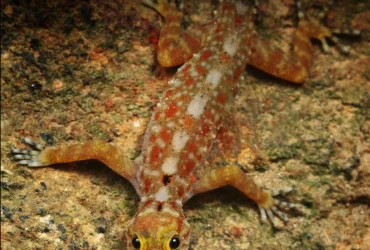 v12i1.300
v12i1.300ISSN: 1800-427X (printed)
eISSN: 1800-427X (online)
DOI:10.47605/tapro.v12i1.300
Submitted date: 5 August 2022
Accepted date: 29 January 2023
Published date: 12 May 2023
Pp. 28
New records of hump-nosed viper Hypnale nepa from the Horton Plains, Sri Lanka
P.A.B.P. Abeyrathne*, R.A.G.N. Ranatunga, S.S. Abayaratne & S.K. Bandara
*Corresponding author. E-mail: babeyrathne@sci.sjp.ac.lk
The Sri Lankan Hump-nosed Viper, Hypnale nepa (Laurenti, 1768) is an endemic species restricted to montane regions above 900 m in Sri Lanka. The Horton Plains is a national park and a montane forest (alt. 2,100–2,300 m a.s.l.) mostly covered by wet grasslands. Faunal surveys carried out in the Horton Plains have so far recorded only three species of snakes: Aspidura trachyprocta, A. copei, and Ptyas mucosa. Herein, we confirm a fourth snake species, and the first photographic
evidence of the occurrence of H. nepa from the Horton Plains, based on two observations made during random visits.
Section Editor: Gernot Vogel
eISSN: 1800-427X (online)
DOI:10.47605/tapro.v12i1.300
Submitted date: 5 August 2022
Accepted date: 29 January 2023
Published date: 12 May 2023
Pp. 28
New records of hump-nosed viper Hypnale nepa from the Horton Plains, Sri Lanka
P.A.B.P. Abeyrathne*, R.A.G.N. Ranatunga, S.S. Abayaratne & S.K. Bandara
*Corresponding author. E-mail: babeyrathne@sci.sjp.ac.lk
The Sri Lankan Hump-nosed Viper, Hypnale nepa (Laurenti, 1768) is an endemic species restricted to montane regions above 900 m in Sri Lanka. The Horton Plains is a national park and a montane forest (alt. 2,100–2,300 m a.s.l.) mostly covered by wet grasslands. Faunal surveys carried out in the Horton Plains have so far recorded only three species of snakes: Aspidura trachyprocta, A. copei, and Ptyas mucosa. Herein, we confirm a fourth snake species, and the first photographic
evidence of the occurrence of H. nepa from the Horton Plains, based on two observations made during random visits.
Section Editor: Gernot Vogel
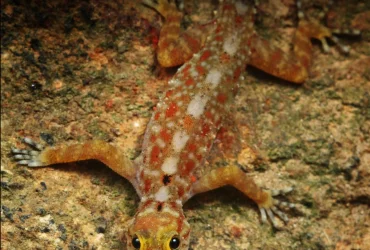 v12i1.299
v12i1.299ISSN: 1800-427X (printed)
eISSN: 1800-427X (online)
DOI:10.47605/tapro.v12i1.299
Submitted date: 24 June 2022
Accepted date: 23 April 2023
Published date: 12 May 2023
Pp. 26–27, pls. 15–17
First record of the cobweb spider (Steatoda erigoniformis) from India
R. Tripathi*, A.K. Jangid, U. Bhagirathan & A.V. Sudhikumar
*Corresponding author. E-mail: rishikeshtripathi14@gmail.com
There are three species of the Genus Steatoda Sundevall, 1833 (Family Theridiidae Sundevall, 1833) distributed on the Indian subcontinent. Here, we report the first record of S. erigoniformis (O. Pickard-Cambridge, 1872) from India, specifically from Maharashtra and Rajasthan states. Previously, this species was known from Central Asia and China, but now its range extends south to Central India.
Section Editor: Francesco Ballarin
eISSN: 1800-427X (online)
DOI:10.47605/tapro.v12i1.299
Submitted date: 24 June 2022
Accepted date: 23 April 2023
Published date: 12 May 2023
Pp. 26–27, pls. 15–17
First record of the cobweb spider (Steatoda erigoniformis) from India
R. Tripathi*, A.K. Jangid, U. Bhagirathan & A.V. Sudhikumar
*Corresponding author. E-mail: rishikeshtripathi14@gmail.com
There are three species of the Genus Steatoda Sundevall, 1833 (Family Theridiidae Sundevall, 1833) distributed on the Indian subcontinent. Here, we report the first record of S. erigoniformis (O. Pickard-Cambridge, 1872) from India, specifically from Maharashtra and Rajasthan states. Previously, this species was known from Central Asia and China, but now its range extends south to Central India.
Section Editor: Francesco Ballarin
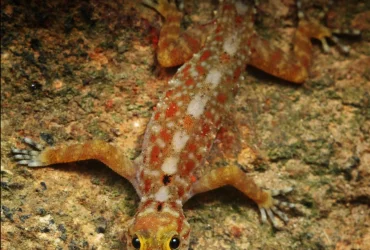 v12i1.298
v12i1.298ISSN: 1800-427X (printed)
eISSN: 1800-427X (online)
DOI:10.47605/tapro.v12i1.298
Submitted date: 24 June 2022
Accepted date: 23 April 2023
Published date: 12 May 2023
Pp. 24–25, pls. 13–14
First description of male long-jawed orb-weaver spider (Tylorida flava)
K.B. Anju* & A.V. Sudhikumar
*Corresponding author. E-mail: anjukbaby07@gmail.com
The long-jawed orb-weavers of the family Tetragnathidae are a cosmopolitan spider clade, particularly diverse in humid tropical and subtropical areas of the world. The subfamily Leucauginae comprises six genera and the genus Tylorida Simon, 1894 includes eight species. Four of them are reported from India and a comprehensive revision of Indian species was published by Sankaran et al. (2017) with a description of T. flava as a new species but based only on a female specimen. Here, the male T. flava is described for the first time along with illustrations of the genitalia.
Section Editor: Akio Tanikawa
eISSN: 1800-427X (online)
DOI:10.47605/tapro.v12i1.298
Submitted date: 24 June 2022
Accepted date: 23 April 2023
Published date: 12 May 2023
Pp. 24–25, pls. 13–14
First description of male long-jawed orb-weaver spider (Tylorida flava)
K.B. Anju* & A.V. Sudhikumar
*Corresponding author. E-mail: anjukbaby07@gmail.com
The long-jawed orb-weavers of the family Tetragnathidae are a cosmopolitan spider clade, particularly diverse in humid tropical and subtropical areas of the world. The subfamily Leucauginae comprises six genera and the genus Tylorida Simon, 1894 includes eight species. Four of them are reported from India and a comprehensive revision of Indian species was published by Sankaran et al. (2017) with a description of T. flava as a new species but based only on a female specimen. Here, the male T. flava is described for the first time along with illustrations of the genitalia.
Section Editor: Akio Tanikawa
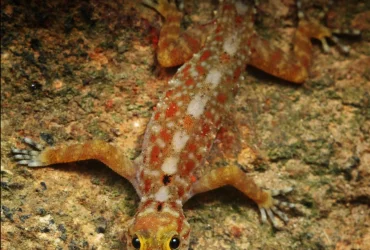 v12i1.297
v12i1.297ISSN: 1800-427X (printed)
eISSN: 1800-427X (online)
DOI:10.47605/tapro.v12i1.297
Submitted date: 6 Dec 2022
Accepted date: 10 May 2023
Published date: 12 May 2023
Pp. 23, pl. 12
A rock python (Python molurus) predates on a porcupine (Hystrix indica)
H. Aththanayaka, S.L. Prakash & S. Karunarathna*
*Corresponding author. E-mail: suranjan.karu@gmail.com
The endemic Sri Lankan subspecies of rock python, Python molurus pimbura is the largest snake found in Sri Lanka. Though distributed island wide, it is listed as Near Threatened due to the rapid population decline. This is a common victim of illegal trade (as pets and for skin/meat). The prey items of the rock python are poorly documented, but it is not unusual for them to take difficult prey such as porcupines. In India, Bhupathy & Vijayan (1989) observed 14% of the python diet was porcupines, but this is a rare observation for Sri Lanka. The Indian crested porcupine, Hystrix indica is the largest and a most widely distributed rodent in Sri Lanka. They live in large burrows dug deep into the ground and give birth to 2–4 young at a time. Predations on porcupines are rare because of their sharp quills, so predators do not attack unless starving.
Section Editor: Thasun Amarasinghe
eISSN: 1800-427X (online)
DOI:10.47605/tapro.v12i1.297
Submitted date: 6 Dec 2022
Accepted date: 10 May 2023
Published date: 12 May 2023
Pp. 23, pl. 12
A rock python (Python molurus) predates on a porcupine (Hystrix indica)
H. Aththanayaka, S.L. Prakash & S. Karunarathna*
*Corresponding author. E-mail: suranjan.karu@gmail.com
The endemic Sri Lankan subspecies of rock python, Python molurus pimbura is the largest snake found in Sri Lanka. Though distributed island wide, it is listed as Near Threatened due to the rapid population decline. This is a common victim of illegal trade (as pets and for skin/meat). The prey items of the rock python are poorly documented, but it is not unusual for them to take difficult prey such as porcupines. In India, Bhupathy & Vijayan (1989) observed 14% of the python diet was porcupines, but this is a rare observation for Sri Lanka. The Indian crested porcupine, Hystrix indica is the largest and a most widely distributed rodent in Sri Lanka. They live in large burrows dug deep into the ground and give birth to 2–4 young at a time. Predations on porcupines are rare because of their sharp quills, so predators do not attack unless starving.
Section Editor: Thasun Amarasinghe
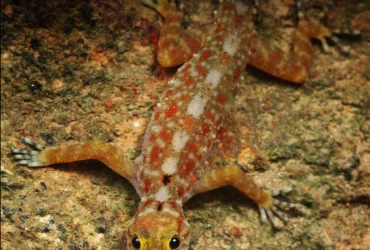 v12i1.296
v12i1.296ISSN: 1800-427X (printed)
eISSN: 1800-427X (online)
DOI:10.47605/tapro.v12i1.296
Submitted date: 6 July 2022
Accepted date: 1 January 2023
Published date: 12 May 2023
Pp. 14–22, pls. 7–11.
FRESHWATER GASTROPOD COMPOSITION AND THE KEY ENVIRONMENTAL DETERMINANTS IN HULU GANGA AND MA OYA RIVER BASINS OF SRI LANKA
P.H. Liyanagedara, W.M.C.S. Wijesundara, M.W.S.K. Yatigammana & S. Kumburegama*
*Corresponding author. E-mail: shalikak@sci.pdn.ac.lk
Abstract
The present study determined the distribution of freshwater gastropods in relation to several environmental variables, in two tributaries of the Mahaweli River, Hulu Ganga and Ma Oya in the Central Province of Sri Lanka. Pearson’s Correlation and a multivariate statistical technique, Canonical Correspondence Analyses (CCA) were used to explore the environmental variables responsible for the species composition. In total eight species of gastropods were recorded. The most influential factors for the four species recorded in Hulu Ganga were dissolved oxygen (DO), total dissolved solids, conductivity and elevation, whereas in Ma Oya they were pH, conductivity, DO and temperature. The results of CCA show that measured environmental variables explained 95.76% of the variation in gastropod abundance in Hulu Ganga, but only 60.63% was explained in Ma Oya. Hence, there may be other unmeasured environmental factor(s) that influence the diversity and distribution of gastropods in Ma Oya.
Key words : Abundance, aquatic habitat, distribution, environmental factors, freshwater snails
Section Editor: Thasun Amarasinghe
eISSN: 1800-427X (online)
DOI:10.47605/tapro.v12i1.296
Submitted date: 6 July 2022
Accepted date: 1 January 2023
Published date: 12 May 2023
Pp. 14–22, pls. 7–11.
FRESHWATER GASTROPOD COMPOSITION AND THE KEY ENVIRONMENTAL DETERMINANTS IN HULU GANGA AND MA OYA RIVER BASINS OF SRI LANKA
P.H. Liyanagedara, W.M.C.S. Wijesundara, M.W.S.K. Yatigammana & S. Kumburegama*
*Corresponding author. E-mail: shalikak@sci.pdn.ac.lk
Abstract
The present study determined the distribution of freshwater gastropods in relation to several environmental variables, in two tributaries of the Mahaweli River, Hulu Ganga and Ma Oya in the Central Province of Sri Lanka. Pearson’s Correlation and a multivariate statistical technique, Canonical Correspondence Analyses (CCA) were used to explore the environmental variables responsible for the species composition. In total eight species of gastropods were recorded. The most influential factors for the four species recorded in Hulu Ganga were dissolved oxygen (DO), total dissolved solids, conductivity and elevation, whereas in Ma Oya they were pH, conductivity, DO and temperature. The results of CCA show that measured environmental variables explained 95.76% of the variation in gastropod abundance in Hulu Ganga, but only 60.63% was explained in Ma Oya. Hence, there may be other unmeasured environmental factor(s) that influence the diversity and distribution of gastropods in Ma Oya.
Key words : Abundance, aquatic habitat, distribution, environmental factors, freshwater snails
Section Editor: Thasun Amarasinghe
Hubungi Kami
The ultimate aim of the journal is to provide an effective medium for communication of the latest and best scientific information.
Copyright © 2020 Taprobanica. All Rights Reserved
Jasa Pembuatan Website by IKT




